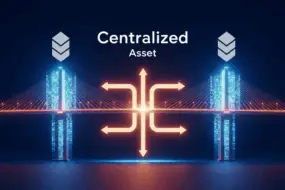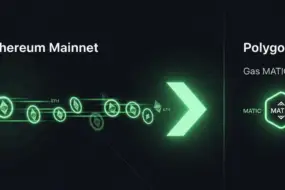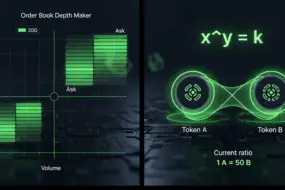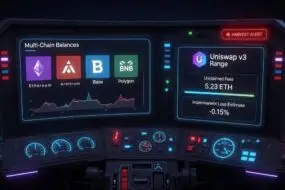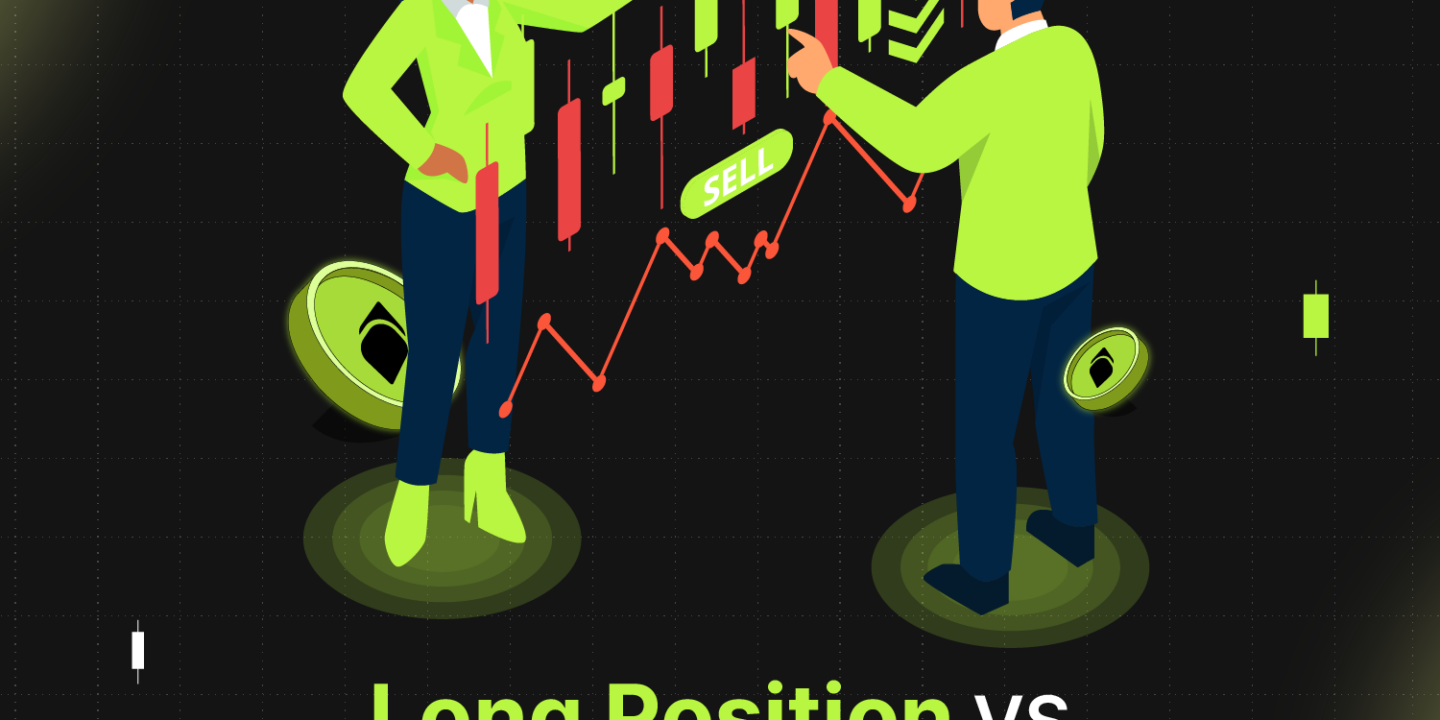
In crypto trading, one of the most important concepts to understand is the difference between long and short positions. Unlike spot trading — where you only profit if prices rise — futures contracts allow traders to benefit from both upward and downward market moves.
Knowing the difference between a long position vs short position in futures helps you decide which strategy fits market conditions, whether bullish or bearish. This guide explains what long and short mean in crypto trading, how they work in futures, and when to use each.
What is Long and Short in Crypto Trading?
In crypto trading, going long means you buy an asset or contract expecting the price to rise, while going short means you sell (or borrow to sell) expecting the price to fall.
- Long position = bullish bet on price increase.
- Short position = bearish bet on price decrease.
These two sides form the foundation of futures long vs short trading, allowing flexibility no matter where the market is heading.
What is the Difference Between a Long and a Short Position?
The main difference is market direction:
- A long position profits when the asset price goes up.
- A short position profits when the asset price goes down.
Both can be leveraged in crypto futures trading, which magnifies profits and risks.
What is a Long Position vs Short Position in Futures?
In futures, a long position is a contract to buy at today’s price for future delivery, while a short position is a contract to sell at today’s price for future delivery. Traders close positions before expiry to realize profit or loss.
For example:
- BTC Futures Long → Buy 1 BTC contract at $30,000. If BTC rises to $32,000, you profit $2,000.
- BTC Futures Short → Sell 1 BTC contract at $30,000. If BTC drops to $28,000, you profit $2,000.
How Do Futures Long vs Short Work?
When you open a futures long vs short position:
- You post margin as collateral.
- You choose leverage (e.g., 10x, 20x).
- Profit/loss is marked to market in real time.
- If margin falls too low, liquidation occurs.
This structure allows traders to profit in both directions but also creates higher risk if leverage is misused.
What Does “Long and Short Position in a Futures Contract” Mean?
It means you are speculating on the future direction of an asset’s price using a contract.
- Long position in futures contract → Buy, expecting higher prices.
- Short position in futures contract → Sell, expecting lower prices.
Each contract represents an agreement, but in crypto most are perpetual futures with no expiry, settled in USDT or other stablecoins.
Long vs Short: Key Differences
Here’s a side-by-side comparison of long vs short in futures trading:
| Feature | Long Position | Short Position |
| Market Sentiment | Bullish (expect rise) | Bearish (expect fall) |
| Profit Direction | Price increase | Price decrease |
| Maximum Gain | Unlimited (prices can rise indefinitely) | Limited (price can only fall to zero) |
| Maximum Loss | Limited to capital (unless leveraged) | Unlimited (prices can rise indefinitely) |
| Typical Use | Bull markets, positive news, strong technical signals | Bear markets, hedging, negative news events |
Example: BTC Futures Long and Short
Scenario: BTC is trading at $30,000.
- Going Long: You open a 1 BTC futures long at $30,000. BTC rises to $33,000 → Profit = $3,000.
- Going Short: You open a 1 BTC futures short at $30,000. BTC falls to $27,000 → Profit = $3,000.
If the market moves the opposite way, the same amounts become losses.
Risks and Benefits of Each
Long Position Benefits
- Profit from price increases.
- Maximum loss capped by invested capital (without leverage).
- Simple strategy for beginners.
Long Position Risks
- Market downturns reduce value.
- Ties up capital if prices stagnate.
- Leverage amplifies losses.
Short Position Benefits
- Profit from market declines.
- Useful for hedging portfolios.
- Valuable in bearish or sideways markets.
Short Position Risks
- Unlimited loss potential if price rises.
- Vulnerable to short squeezes.
- Requires strict risk controls.
When Should a Trader Go Long or Short in Futures Trading?
- Go Long when:
- Market sentiment is bullish.
- Positive news, adoption, or strong technical patterns suggest a rise.
- You want exposure to price growth with leverage.
- Go Short when:
- Market sentiment is bearish.
- Negative news, regulatory risks, or bearish technical signals dominate.
- You want to hedge existing crypto holdings.
Traders often combine both, going long on assets with strength and short on weaker ones to balance risk.
Risk Management for Futures Long vs Short
Whether you go long or short, risk management is essential:
- Stop-Loss Orders: Protect against sudden reversals.
- Position Sizing: Never risk more than a small percentage of your account on one trade.
- Leverage Control: Lower leverage reduces liquidation risk.
- Diversification: Spread across different coins or strategies.
See Also: [Bitunix Risk Management Guide] and [Spot vs Futures Trading Differences].
Conclusion
The choice between long vs short positions in crypto futures trading comes down to your market outlook, risk appetite, and trading strategy.
- Long positions are best when you expect prices to rise.
- Short positions are useful when markets fall or when hedging.
By mastering both, traders can navigate any market cycle. But always remember: leverage magnifies risk, so use stop-losses, manage position size, and trade responsibly.
Whether you are bullish or bearish, Bitunix futures allow you to take both long and short positions with advanced tools to manage risk and maximize opportunity.
FAQs
What is long and short in crypto trading?
Long means betting the price will rise, short means betting it will fall.
What is the difference between a long and a short position?
Long positions profit in bullish markets, short positions profit in bearish markets.
What is a long position vs short position in futures?
A long futures contract agrees to buy at today’s price; a short futures contract agrees to sell at today’s price.
How do futures long vs short work?
You post margin, apply leverage, and profit or lose depending on whether the price moves in your predicted direction.
What does “long and short position in a futures contract” mean?
It refers to the two directions traders can take in a futures market: long for rising prices, short for falling prices.
What are the risks and benefits of each?
Longs offer unlimited profit potential but lose in downturns. Shorts profit in bear markets but risk unlimited losses if prices rise.
When should a trader go long or short in futures trading?
Go long in bullish conditions, go short in bearish conditions, and always apply stop-losses to manage risk.
About Bitunix
Bitunix is one of the world’s fastest growing professional derivatives exchanges, trusted by over 3 million users across more than one hundred countries. Ranked among the top exchanges on major data aggregators, Bitunix processes billions in daily volume and offers a comprehensive suite of products including perpetual futures with high leverage, spot markets, and copy trading. Users can trade bitcoin and other major cryptocurrencies on the platform, taking advantage of advanced trading features. Known for its Ultra K line trading experience and responsive support, Bitunix provides a secure, transparent, and rewarding environment for both professional and everyday traders. Bitunix Academy adds structured lessons so you can build skills while you trade.
Bitunix Global Accounts
X | Telegram Announcements | Telegram Global | CoinMarketCap | Instagram | Facebook | LinkedIn | Reddit | Medium
Disclaimer: Trading digital assets involves risk and may result in the loss of capital. Always do your own research. Terms, conditions, and regional restrictions may apply.







